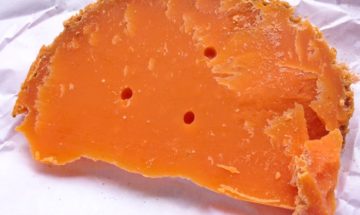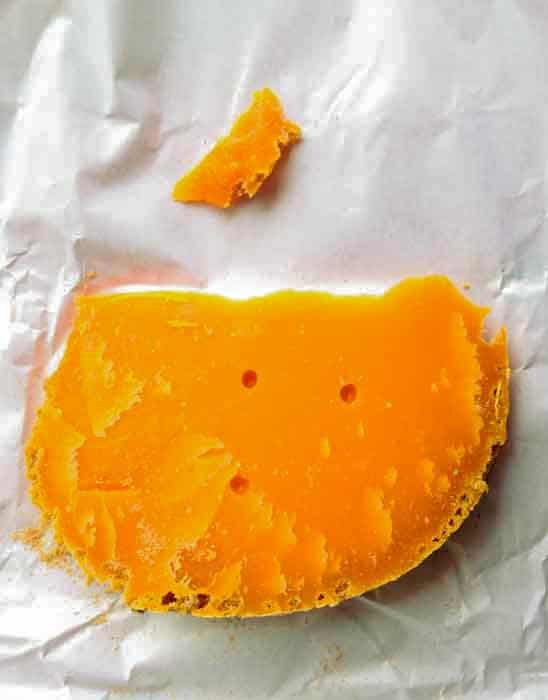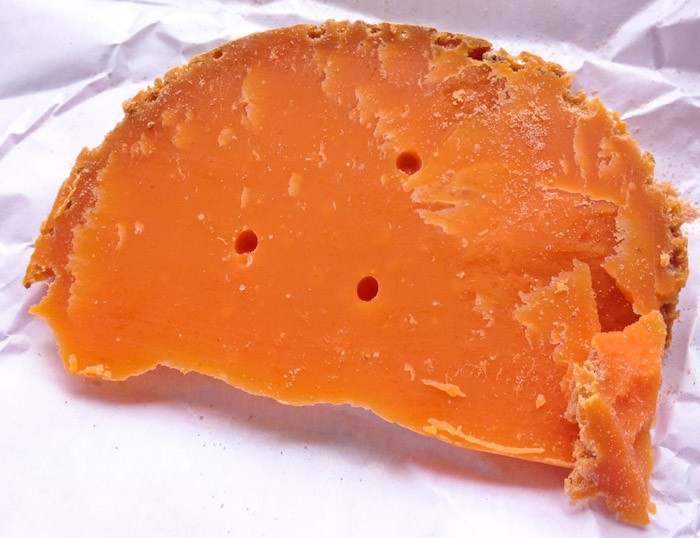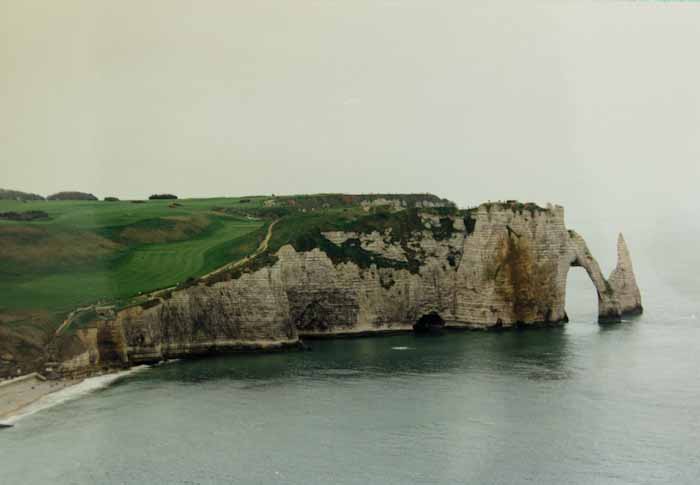The history behind Mimolette cheese
The bright orange colour of Mimolette cheese makes it instantly recognizable. It is also known as “Boule de Lille”, as it was originally created in Lille in the north of France, and is still made around that area today. Why was it made in the first place? I’m sure you’re asking that question. Well, the story goes that in the 1600s, when France was at war with Holland, the French still wanted to eat Edam cheese, so the king at the time, Louis XIV sent the word out to his Minister of Finance, Jean-Baptiste Colbert that he needed to get something done about getting cheese on the table again. How could the French survive otherwise? So, Mr Colbert convinced the farmers around Flanders to try to make a similar cheese to Edam. They actually didn’t make a cheese anything like Edam, but came up with something even better, and called it a much nicer name: mimolette!
How does Mimolette cheese get its orange colour?
The orange colour of this cow’s milk cheese comes from a natural product called annatto, which come from the seeds of the achiote tree, and the grey, pitted crust is produced because of the microscopic cheese mites that nibble away at the cheese while it is maturing and hardening for up to 2 years. Don’t worry: most of the mites get brushed off when it’s sold. There was actually a big row between France and the U.S.A. a few years ago about importing mimolette because of the mites present on the surface of the cheese. Apparently for years the U.S. government has had a rule that there can only be 6 mites per square inch of cheese, which is an incredibly low number. I want to know how they count them if the mites are moving from one square inch to another during the counting. Anyway, it seems to have all been a storm in a teacup and mimolette can be found in all its mite-laden glory in the U.S. again.
The mimolette shown above is “middle-aged”. It is hard and almost crumbly when it is very old. It has a sharp nutty, salty taste. The older it gets, the stronger the taste gets. The crust is edible, but doesn’t taste very good (maybe because of all those mites!), so it’s better to cut it off before eating the cheese.
The photo below was taken in Normandy, which is as close as I can get for you to the area the cheese is made in. It’s not terribly different: imagine being able to be a cow and graze with that view all day!
By Lisa Watson



